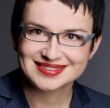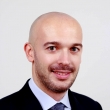09:00 - 10:30 Noise and visual impacts and you as the local resident
Environmental impacts & social acceptance

Room: C 2.2
This session will explore various technologies and methodologies to analyse and mitigate noise and visual impacts of wind farms. It will focus in particular on the capacity of the various technologies to foster acceptance among citizens living around a wind farm. Preventing negative impacts of wind farms on people means reducing noise and visual impact.
Chair and speakers will involve the audience by discussing the various examples of projects using these technologies. With the help of these examples, we will try to find out why certain technologies help to foster acceptance while others do not.
You attended this session?
Learning objectives
- Apply two new methodologies when analysing visual impact;
- Consider application of three approaches when analysing noise impacts;
- Explain ways of reducing noise and visual impact;
- Distinguish effective and less effective technologies for various kinds of wind power projects.

Presenter

Co-authors:
Thomas M. Klein (1) F P
(1) ETH Zurich, Zurich, Switzerland
Presenter's biography
Biographies are supplied directly by presenters at WindEurope Summit 2016 and are published here uneditedDr. Grassi has been working in renewable energy industry for more than 10 years and leading research in wind energy at ETH since 2009. He is currently Postdoctoral Researcher at ETH at the Institute of Civil, Environmental and Geomatic engineering. He studied environmental engineering at the University of Brescia and Energy management and Policy at the Mines ParisTech in Paris. After his graduation he spent some years as project designer of hydro and biomass power plants in Italy. After a second Master in Paris he moved to Switzerland leading research in spatial planning and modelling in the field of wind and solar energy.





Follow EWEA on: